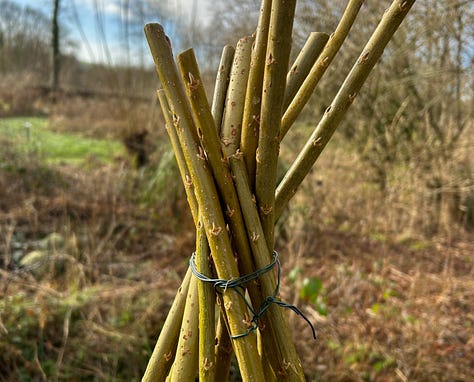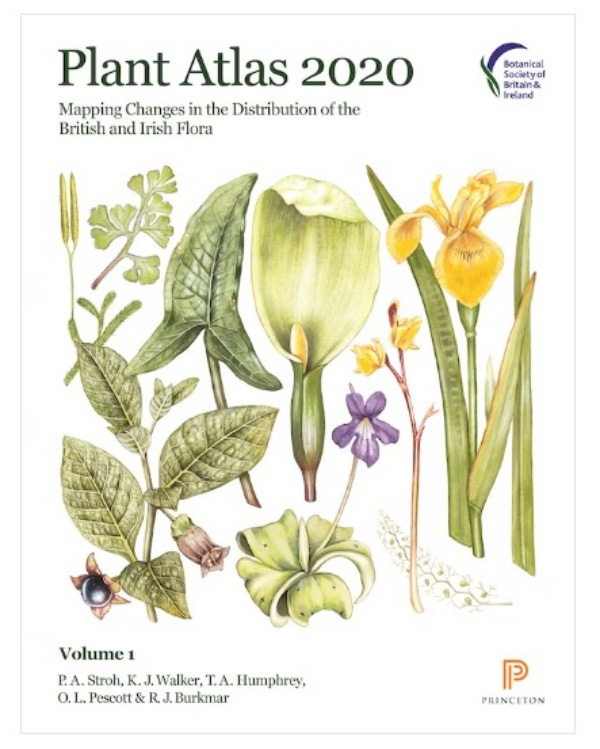Medicinal Forest Garden Trust UPDATE January 2024
An update on newsletter changes, making a willow obelisk, some great books and other resources including a free reference download on medicinal trees
Medicinal Forest Garden Trust Newsletter changes
In the last couple of months there have been several changes in the way I send out Medicinal Forest Garden Trust news and update the Medicinal Forest Garden Trust website blog. The first change is that I have shifted from the email provider Mailchimp for these newsletter updates. Each quarterly update will now be freely available through Substack subscription to the Medicinal Tree Woman newsletter. There were several reasons for this change: (a) Mailchimp have updated their terms of service to make all of the information sent in emails available for AI which is something I object to; (b) the subscription numbers had grown to over 450 and Mailchimp starts charging fees once numbers exceed 500.
The second change is that I have combined the previous Medicinal Forest Garden Trust website blog with the new Medicinal Tree Woman newsletter. There are two main reasons for this: (a) the platform of Substack offered a way to combine both newsletter and blog as a free subscription with an extra level of paid subscription for supporters who want to be more involved; (b) I liked the flexible format which I hope will encourage me write more about medicinal forest gardening and related interests.
Choosing and using your willows
Here are some thoughts about choosing willow shrubs or trees that can be rather vigorous and/or need to be coppiced and/or pollarded. Back in the time of Holt Wood, our medicinal tree and shrub project, we planted a number of willow species and varieties. These included white willow (Salix alba), purple willow (Salix purpurea), and violet willow (Salix daphnoides) - and some basket willows. And there was goat willow (Salix caprea) which arrived of its own accord due to fluffy seed dispersed by several local well grown trees.
We discovered that willow is rather like grass - you just have to keep cutting and harvesting it! Alternatively, without regular cutting, many of these plants will grow within a few years to present a thickening trunk and tall tree with branches well out of reach for pruning. Our purpose was to harvest leaves and bark but the productivity level of many Salix species was well beyond my needs as a herbal practitioner. I was able to gain plentiful supplies of powdered bark for making capsules, and to use bark and leaves for making alcohol-based tinctures. One further use was to dry and powder bark for an exfoliant in cold-process soap (more about this in a future Making Recipes # post).
So I decided a few years back that white willow was rather too much to handle, and I always try to warn people about planting it - even a pencil-thin stick will root and can eventually turn into an extremely large tree. If you pollard the white willow then a huge number of stems can be produced. Finding uses for the profusion of stems is vital for sanity. Possibilities include chipping for a mulch. I wish I had discovered then that there is excellent advice on making garden obelisks from willow. You can see a helpful YouTube video online from Lovely Greens about ‘How To Make a DIY Garden Obelisk’.
Here, below, is a start in making an obelisk with willow stems cut at Sandford Herb and Forest Garden in Devon - not too bad for my first attempt!



My all-time favourite willow species is the violet willow which has a much gentler soul than the vigorous white willow. It dislikes shade and must be grown in the open. I pollarded this plant when a few years old to head height (my head so that is 5 ft 2 in or about 160 cm). My reward was delightful purplish stems which gave me a bark rich in salicylates, the active ingredient that has anti-inflammatory effects in the body. If you are eagle-eyed you may have spotted that the logo for the Medicinal Forest Garden Trust is actually based on an image of a pollard of the violet willow.



If getting to know trees is your thing
Gooley, Tristan. 2023. How to read a tree: Clues and patterns from roots to leaves. London: Sceptre.
Discovered in 2023 and could be a useful read if you want to get to know trees better. I came across this book by chance in a garden centre, and am so glad I took the jump and bought it. It does a great job of making sense of the seemingly random ‘shapelessness’ of trees. By the end of this book I was really noticing branches and leaf colour and other differences which could tell so much about the way a tree has grown. Did you know you can use trees as a compass? Missing branches, root patterns and even the shapes of leaves are powerful indicators of different species and their environment. A readable book, ideal for UK trees with additional material in appendices on tree family identification. This is a book that I will return to again and again.


Stroh PA, Walker KJ, Humphrey TA, Pescott OL, and Burkmar RJ. 2023. Plant atlas 2020: Mapping changes in the distribution of the British and Irish Flora: Princeton University Press.
The Plant Atlas 2020 is a huge tome for serious botanists, actually it is two hefty volumes of doorstop size. This remarkable text presents the latest extensive survey of plants in Britain and Ireland. Based on 30 million reports, there are maps of every native species plus quite a few non-native plants that have settled in. For example, there are maps for oregon grape (Mahonia aquifolium) and ginkgo (Ginkgo biloba). There are also chapters on changes in the range of flora. This amazing resource comes in hard copy with 30% discount for members of the Botanical Society of Britain and Ireland. But you do not need to buy it as the information is fully available online and can be searched for individual species.
Free download of medicinal tree references
Now available on the Medicinal Forest Garden Trust website is a free download of clinical science references for 80 medicinal trees and shrubs suited to a temperate climate. These references include laboratory analyses, in-vitro studies of effects, and some clinical studies. Not for light reading! But this might be a helpful source if you want to find starting points for the latest evidence for the clinical effects of medicinal trees and shrubs. These references were compiled by Anne when writing the book Trees And Shrubs That Heal (2023). Be warned that in this PDF there are 40 pages... download here.
Further updates from the Medicinal Forest Garden Trust
A Medicinal Forest Garden Trust UPDATE will be released every 3 months or so with news of interest related to medicinal forest gardening - including books, events, free resources, projects, suppliers, trees and shrubs, and more. If you have relevant news or resources to share then do get in touch!






